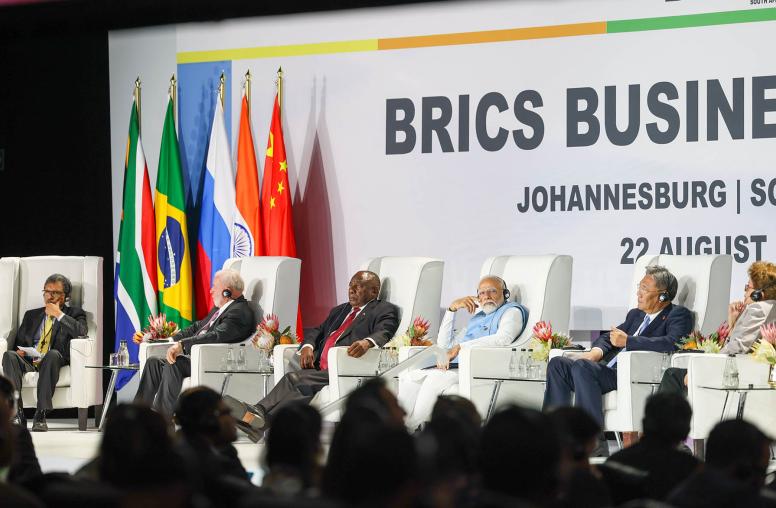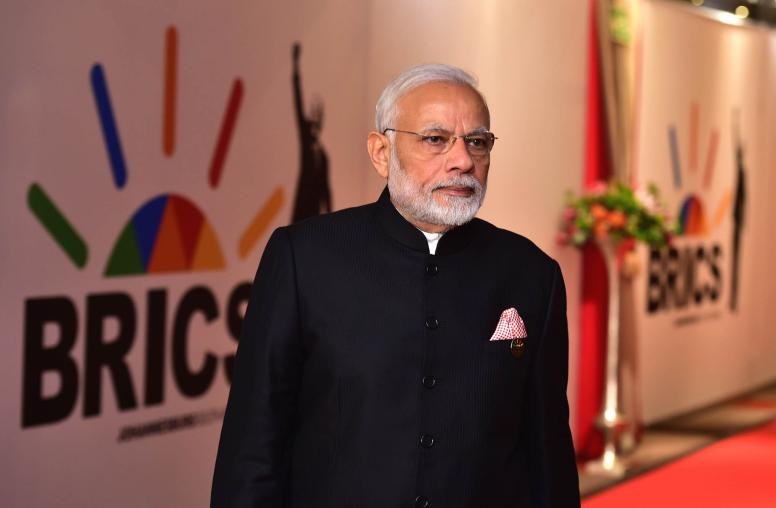In India, Women Propel World’s Largest Protest Movement
Women have taken a leading role in the country’s farmers’ protest and seized the opportunity to demand equality.
Hundreds of thousands of farmers have been protesting new farm laws on the outskirts of the Indian capital city of New Delhi since September 2020. The prominent presence of women in what is perhaps the world’s largest ongoing protest movement, and certainly the biggest domestic challenge facing Indian Prime Minister Narendra Modi’s government, has put a spotlight on the important role women play in agriculture in this South Asian nation; it also marks a milestone in women’s struggle for equality, and their leadership of nonviolent movements.

The protest erupted when the Modi government passed three laws in Parliament that open the agricultural market to privatization. The Modi government says the laws “give expanded market access and provided greater flexibility to farmers.” The protesters contend the laws favor large corporations, will drive down prices of agricultural produce, and push small farmers into poverty.
Undeterred by the bitter cold of the northern Indian winter and the COVID-19 pandemic, the protesters are demanding the laws be repealed. Most of the protesters are from the northern states of Punjab and Haryana—India’s two largest agricultural producers. The fact that these two states are also among India’s worst performers in terms of the female-to-male sex ratio—for instance, there are 886 females to 1,000 males in Punjab, according to the NITI Aayog’s Sustainable Development Goals 2019 India Index—makes the presence of women in the farmers’ protest even more remarkable.
Many Reasons to Protest
While the presence of women in the farmers’ protest is significant, it is not the first time women have participated in such demonstrations. Most recently, women led a peaceful sit-in at Shaheen Bagh in New Delhi from December 2019 to March 2020. The Shaheen Bagh protests were in response to the controversial Citizenship Amendment Act, which provides a fast track to Indian citizenship for migrants from Afghanistan, Bangladesh and Pakistan, but not if they are Muslim.
Women participating in the farmers’ protest worry that besides their livelihoods, the new laws threaten the lives of their male relatives and, as a consequence, their own future and that of their families. In 2018 and 2019, more than 10,000 male farmers committed suicide in each year, according to a 2019 report by the National Crime Records Bureau. Financial hardship is partly to blame for farmers’ suicides. Widows left behind have to fend for themselves and carry the heavy burden of providing food, shelter, healthcare and education for their families.
The farmers’ protest has also rekindled women’s demands for land reforms. Although female farmers represent 75 percent of the female working class in rural areas of India, they own barely 13 percent of the farmland. According to the India Human Development Survey, 83 percent of agricultural land is inherited by male members of the family and less than 2 percent by females. Furthermore, women, especially those whose spouses have committed suicide, are unable to gain the right to the land they farm due to gender-biased inheritance laws. This reality, coupled with the inability of female farmers to access subsidies, insurance, loans and aid programs, has driven women to join the protests in large numbers and demand wider reforms.
Women are working together to juggle their presence at the protest with the need to care for their families and tend their farms while the men are out protesting. They have also ensured that there is a steady supply of rations and basic necessities at the protest sites. The visualization of female protesters in media reports is important. Reporters covering this story should not lose focus on this critical element.
An Attempt to Silence Women
The role of women in the protest has not gone unnoticed. On January 11, Chief Justice of the Supreme Court of India S.A. Bobde said female and elderly protesters should return to their homes. The remark angered protesters who saw it not just as an attempt to exclude women from the protest, but also as a warning of violence to come against the protesters.
The women at the protest sites are keenly aware that their presence has offered some protection to the men from the security forces. Even so, police have used tear gas and water cannons against the protesters, many have been arrested, water and electricity supply to makeshift protest camps has been cut off, and the internet shut down for several days.
Women have to pay a heavy price for their participation in the protest. They face persecution, repression and arrest. In one prominent incident, Disha Ravi, a 22-yeard-old climate activist, was arrested in the southern city of Bengaluru on February 13 on the charge of sedition. Police said Ravi, a founder of the local chapter of climate activist Greta Thunberg’s Fridays for Future movement, was publishing and disseminating an online toolkit of nonviolent tactics to support the protesting farmers. The toolkit calls on people to sign a petition condemning the repression of protesters by security forces and to hold demonstrations in front of Indian embassies around the world. Ravi was granted bail with the judge noting “scanty and sketchy evidence” produced against her.
Lessons Learned from Female Protesters in India
The novelty of the farmers’ protest in India is the cross-generational, cross-gender and cross-geographic mobilization of citizens who clearly believe in people power and the need for mass participation. Women, both in the rural and urban areas, have joined forces to make their voices heard.
Women in other parts of the world can draw some key lessons from the experience of women participating in the farmers’ protest. The nonviolent nature of the protests has been a critical factor responsible for the higher participation of women and the elderly. Some Indian women have skillfully utilized social media not just to promote nonviolent tactics, but also to draw international attention from women around the world to their cause; this has given an international dimension to the farmers’ protest.
The protest has, for example, attracted support from international celebrities, including Thunberg and popstar Rihanna. India’s Ministry of External Affairs responded to these interventions saying: “The temptation of sensationalist social media hashtags and comments, especially when resorted to by celebrities and others, is neither accurate nor responsible.”
The presence of women in the protests also challenges the stereotype of Indian women as being passive victims of societal injustices and gender-based violence. Female farmers have added a gendered component to the crisis that has led hundreds of thousands of Indians to protest. They have seized the opportunity presented by the protest to demand not just the repeal of the controversial farm laws, but also to end discrimination and inequality.



